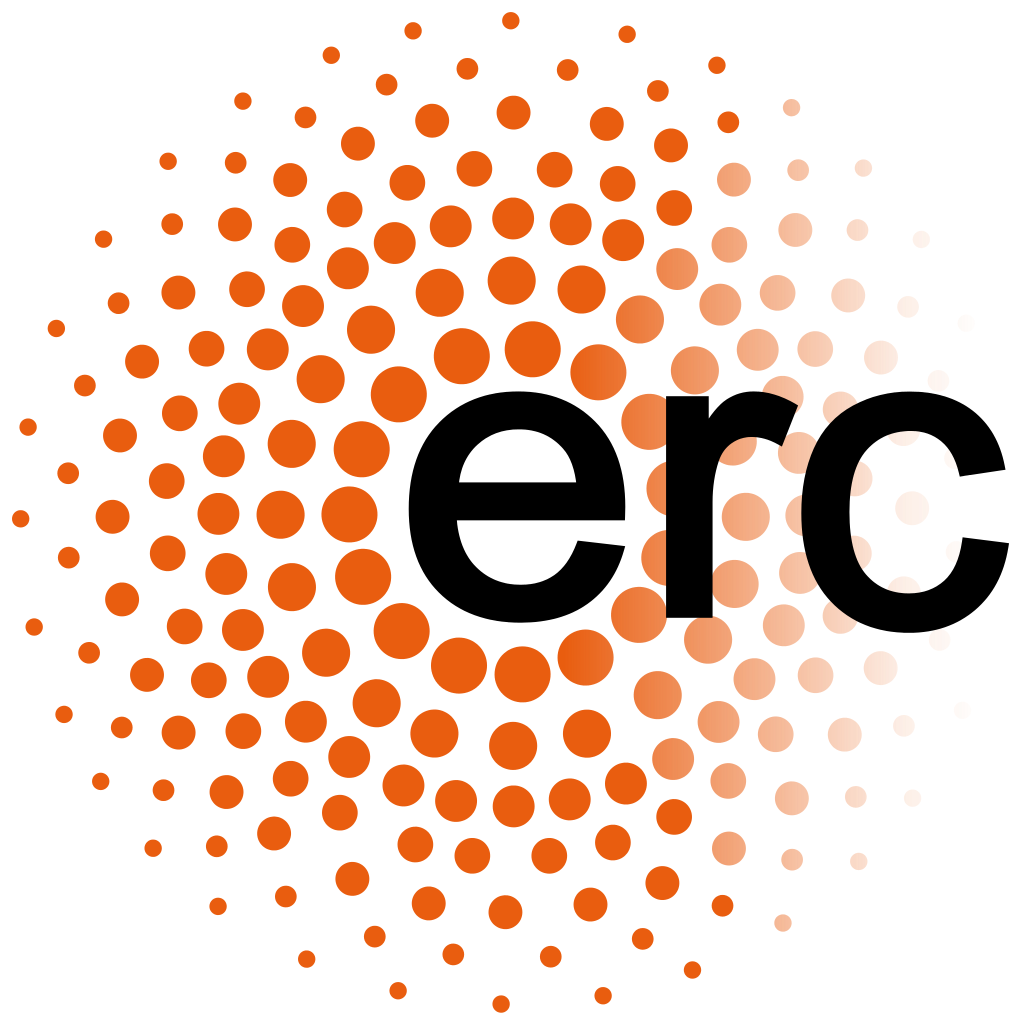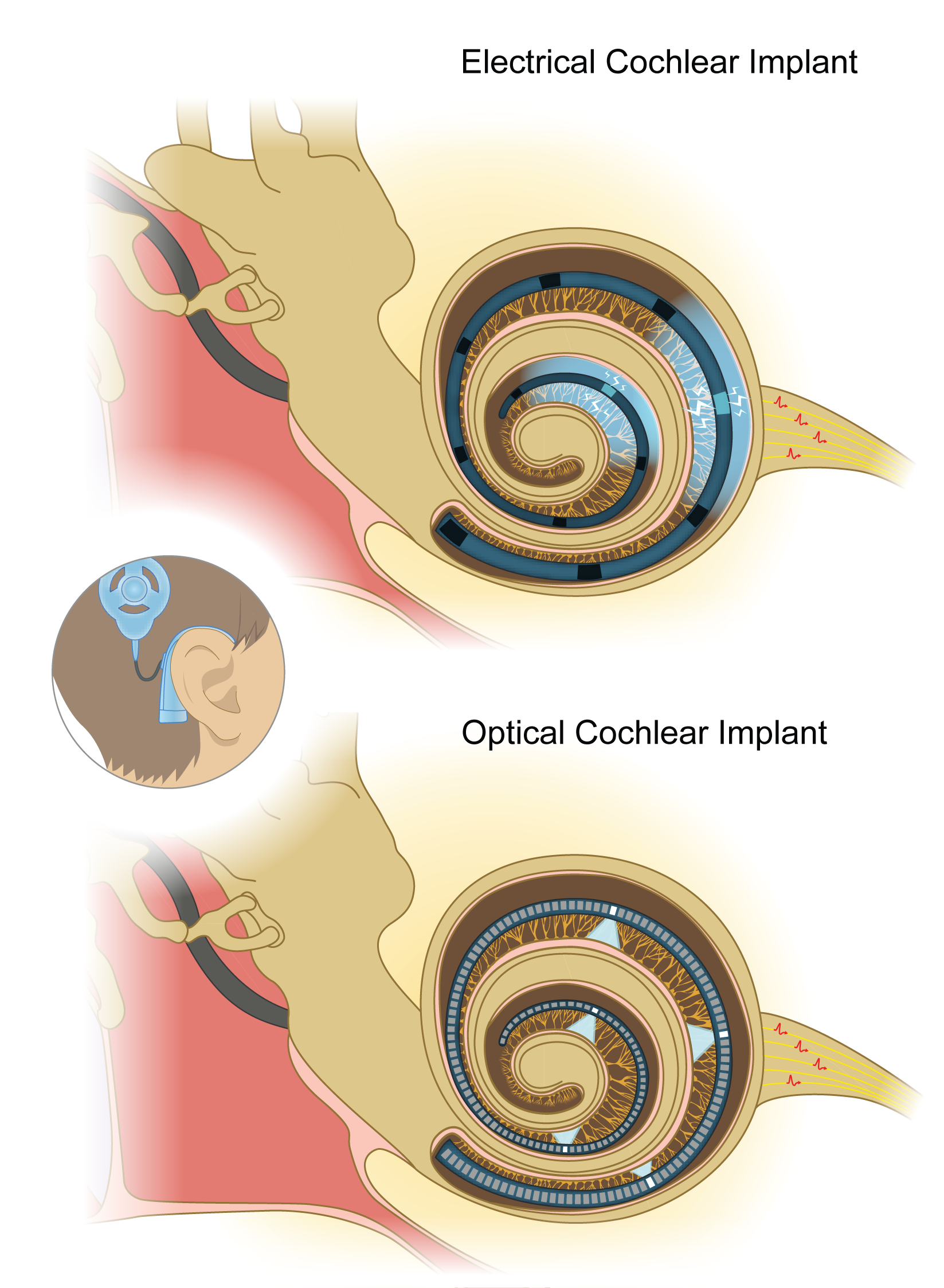ERC Advanced Grant "OptoHear" |

|
About the project
According to a report of the WHO, approximately 360 million people – 5% of the world’s population – suffer from disabling hearing impairment, commonly causing social isolation, depression, and reduction in professional capabilities. Therefore, understanding how hearing works and combating hearing impairment is of great importance. So far, despite major research efforts a causal treatment based on pharmacology, gene therapy, or stem cells is not yet available for its most common form: sensorineural hearing impairment. Hearing aids and/or cochlear implants represent the state-of-the-art approaches for partial restoration of auditory function and they are likely to remain key means for alleviating sensorineural hearing impairment also during the coming decades.
The cochlear implant bypasses cochlear dysfunction via direct electric stimulation of auditory neurons of the inner ear and is considered the most successful neuroprosthesis, used in more than 500,000 hearing impaired patients. Cochlear implants enable open speech comprehension in most users. Moreover, cochlear implants have become a major tool in auditory research. However, the use of current cochlear implants has limitations arising from the wide spread of current around each electrode contact which leads to channel-crosstalk and limits the number of useful frequency channels to typically less than ten in clinical cochlear implants. Since the coding of sound frequency in the inner ear is tied to the location of the excited neuron and thus to the spatial spread of excitation within the ear, users of electrical cochlear implants suffer from poor frequency resolution of hearing and therefore show poor comprehension of speech in noisy environments and typically cannot appreciate music. The low frequency resolution limits the use of electric cochlear implants in basic research, too. Increasing the frequency and intensity resolution of auditory coding is a central objective for improving the cochlear implant.

Optical stimulation of auditory neurons, which we establish in the project “OptoHear” funded by the European Research Council, is a novel approach that promises a dramatic increase of the frequency resolution of cochlear implants, since light can be more easily confined in the cochlea and therefore less spread of excitation than in electrical implants can be achieved. The increased frequency resolution provides unprecedented opportunities for auditory research and promises to overcome the major bottleneck of current cochlear implants. In addition, activation of smaller populations of neurons can also enhance the dynamic range of coding e.g. by varying recruitment of neighboring channels.
The application of optogenetics to the cochlea, pioneered by our research team, uses virus-mediated expression of Channelrhodopsins, light-gated ion channels that can be used to activate neurons, to render neurons sensitive to light. This method, coined “optogenetics” has revolutionized the life sciences and is in rapid development with various applications and advances such as the engineering of improved Channelrhodopsin variants and vectors, some of which also serve as vectors in clinical trials on gene therapy. Important technological advances enable tailored optical stimulation. Thin-film light emitting diodes (LEDs) reach high power efficiency, can be miniaturized (µLEDs) and prepared for shaping the beam of the emitted light. Flexible waveguide arrays, vertical cavity self-mixing laser diodes (VCSELs), as well as thin-film flexible electronics on polymer substrates have become available.
The goal of “OptoHear” is to lay the ground for the development of optical cochlear implants for auditory research and future clinical translation. For this, we work on identifying the best-suited viral vectors and Channelrhodopsins, optimize their expression in auditory neurons of rodents and non-human primates (marmosets), and probe the safety and reliability of their expression. In parallel, we establish multichannel optical stimulation in these animals, characterize neuronal responses to cochlear optogenetics along the auditory pathway by physiological and behavioral approaches, and employ cochlear optogenetics for fundamental auditory research.
“OptoHear” will establish and use cochlear optogenetics as a research tool, validate its potential for research and hearing restoration, and prepare translation into the clinic by finally validating the safety and efficiency of auditory optogenetics in marmoset monkeys as a last step before first clinical trials.
  |
||
This project has received funding from the European Research Council (ERC) under the European Union’s Horizon 2020 research and innovation programme (grant agreement No 670759) |

